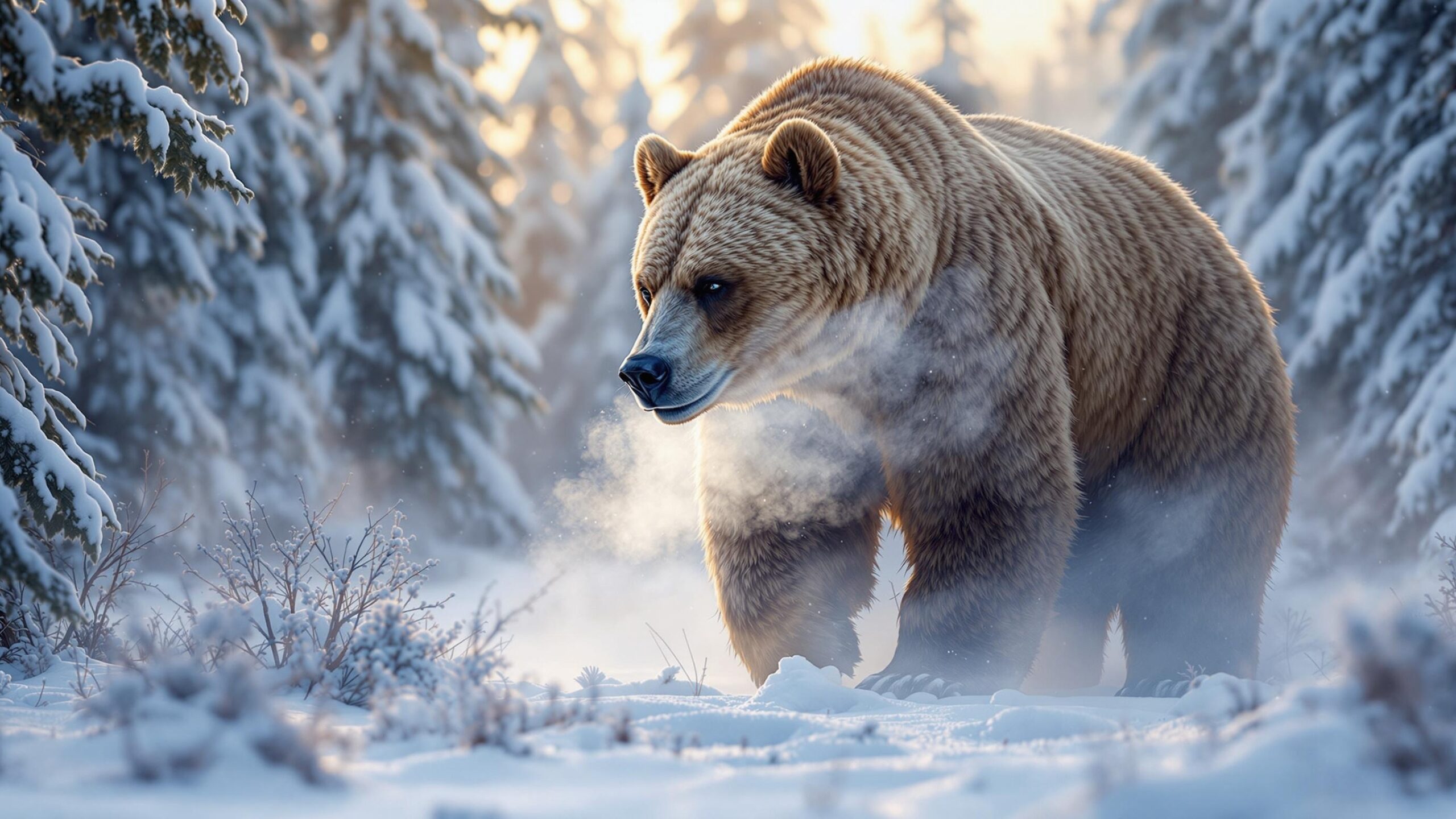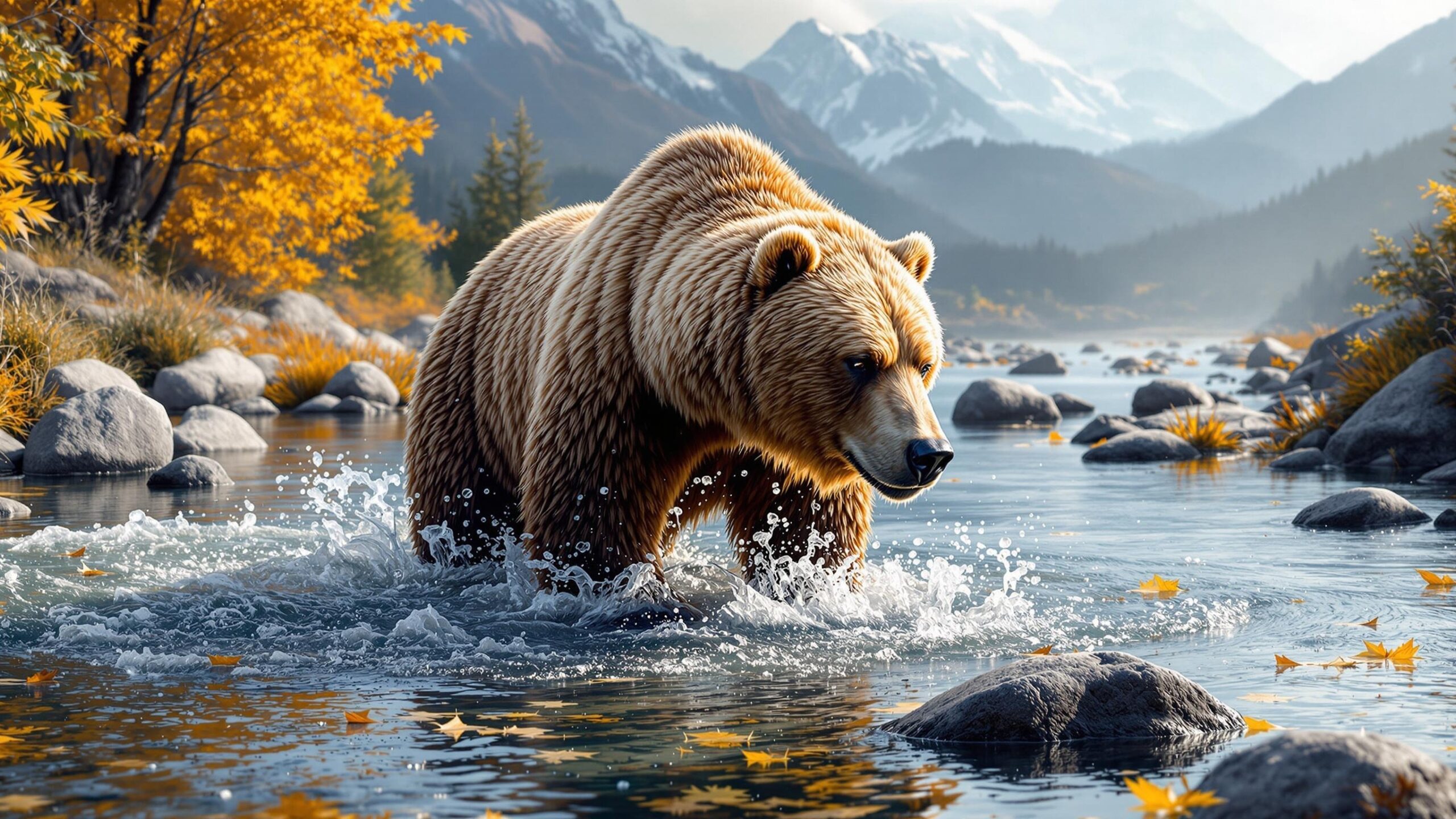Siberian Brown Bear (Ursus arctos collaris): The Silent Guardian of the Russian Wilderness
Deep within the boundless forests of Siberia roams one of the largest and most enigmatic predators on Earth—the Siberian brown bear, scientifically known as Ursus arctos collaris. A subspecies of the widespread Eurasian brown bear, this majestic creature embodies both the mystery and power of the Russian wilderness.
From the frostbitten Ural Mountains to the vast taiga of the Russian Far East, the Siberian brown bear is a symbol of resilience, adaptation, and balance in nature. Though not as famous as its coastal cousins in Kamchatka or the Kodiak bears of Alaska, the Siberian brown bear plays an equally vital role in the ecosystems it inhabits. This article explores the biology, behavior, habitat, and cultural significance of this remarkable bear—offering a comprehensive guide to one of the wild’s most formidable residents.
Classification and Evolutionary Background
The Siberian brown bear is one of several recognized subspecies of the brown bear (Ursus arctos), a species that originated in Eurasia and later spread to North America. The scientific name Ursus arctos collaris distinguishes the Siberian variety from other brown bear populations due to specific genetic, morphological, and behavioral traits. The name “collaris” is derived from the faint collar-like markings some individuals exhibit during youth, though these typically fade with age.
The Siberian brown bear shares ancestry with the Kamchatka bear (Ursus arctos beringianus) and the European brown bear (Ursus arctos arctos), yet it has uniquely adapted to the harsh, variable environments of inland Russia. Having survived the Ice Ages, these bears are living relics of a time when megafauna ruled Eurasia. Their ability to thrive in Siberia’s extreme cold, scarce resources, and seasonal unpredictability speaks to their evolutionary hardiness and adaptability.
More Articles
Physical Description
Siberian brown bears are among the largest land carnivores in Eurasia. Adult males generally weigh between 600 and 1,000 pounds, though in areas with abundant food, particularly salmon runs, some individuals can exceed 1,200 pounds. Females are typically smaller, ranging from 300 to 700 pounds. These bears can stand up to 7 feet tall when on their hind legs and measure 3.5 to 4 feet at the shoulder when on all fours.
Their thick, double-layered fur serves as insulation against the biting cold of Siberian winters. The coat color varies widely—from light cream and cinnamon to dark brown and black—though most bears display a classic chocolate hue. This diversity helps them blend seamlessly into their surroundings across different seasons. One of their most distinctive features is the pronounced muscle hump over their shoulders, which provides the power needed for digging and moving through rugged terrain. Their long, curved claws—sometimes over four inches—are designed for tearing apart logs, excavating roots, or catching prey.
Range and Habitat
The Siberian brown bear occupies a vast expanse of territory across Russia, from the Ural Mountains and Altai region in the west to the Amur River basin and the Russian Far East in the east. This distribution includes boreal forests (taiga), subalpine zones, and occasionally open tundra. The bear’s presence extends into northern Mongolia, Kazakhstan, and even parts of northeastern China.
Siberia’s landscape is dominated by dense coniferous forests, rolling hills, and isolated valleys—an ideal refuge for an animal that thrives in solitude. Seasonal migrations are common as bears move between higher elevations and lowland rivers to follow food availability. In summer and fall, they gravitate toward areas rich in berries, nuts, and salmon. In spring, they roam forest floors for fresh vegetation and animal carcasses. Despite their size, Siberian brown bears are elusive, typically avoiding areas of human settlement and maintaining a low profile in the vast wilderness. Their territories can span several hundred square miles, depending on gender, age, and food density.
Diet and Foraging
Like other brown bear subspecies, the Siberian brown bear is an opportunistic omnivore with a remarkably flexible diet. In the warmer months, their food intake leans heavily on vegetation—grasses, herbs, roots, berries, and nuts—especially pine nuts from Siberian pine trees. They also consume insects, larvae, and carrion.
Protein becomes a greater dietary component in early spring and late summer. When available, Siberian brown bears will prey on marmots, deer, wild boar, moose calves, and fish, particularly salmon in eastern parts of their range. During summer salmon runs in rivers near the Pacific coast, these bears demonstrate impressive fishing skills, standing knee-deep in icy water to catch fish mid-leap. In preparation for winter hibernation, the bears enter a phase called hyperphagia during late summer and autumn. During this time, they consume vast amounts of food—sometimes over 20,000 calories per day—to build up fat reserves that will sustain them through the long, inactive months of winter.
Behavior and Life Cycle
Siberian brown bears are primarily solitary, though they may tolerate each other’s presence when food is abundant, such as during salmon runs. Males tend to roam over larger areas than females and avoid contact with other males outside the breeding season. Mating occurs from May to July, but due to a biological phenomenon called delayed implantation, the fertilized egg does not immediately begin development. If the female accumulates sufficient fat reserves by fall, the embryo will implant, and cubs will be born in the den between January and March.
Cubs are born small—typically weighing less than a pound—and are blind and helpless. They stay with their mother for up to three years, during which time she teaches them essential survival skills. Females are devoted mothers, fiercely protective and patient. During this period, she will not mate again, dedicating all her energy to raising her young. Communication among bears is subtle. Vocalizations include huffs, growls, and grunts, but most interactions rely on body language and scent marking. Tree scratching, urine scenting, and claw rakes are common ways bears communicate territory or presence.
Hibernation and Seasonal Adaptations
The Siberian brown bear’s annual hibernation is an evolutionary marvel. As the days shorten and temperatures plunge, bears retreat into dens—often dug into hillsides, beneath tree roots, or in caves. They typically enter hibernation between October and December, depending on climate and food availability, and remain in their dens until April or May.
During this time, their heart rate slows dramatically, body temperature drops slightly, and metabolic functions are suppressed. Remarkably, bears do not eat, drink, urinate, or defecate during hibernation. Instead, they rely entirely on stored fat for energy and hydration, recycling waste within their bodies through a specialized biological process. Cubs born during hibernation nurse from their mother and grow rapidly in the warmth of the den. When spring arrives, the family emerges into a world of melting snow, budding plants, and renewed life.
Intelligence and Senses
Brown bears are renowned for their intelligence, and the Siberian brown bear is no exception. These bears have excellent long-term memory, problem-solving abilities, and the capacity to learn from experience. In the wild, they use this intelligence to navigate vast home ranges, remember seasonal food sources, and avoid dangerous areas.
Their sense of smell is exceptional—several thousand times stronger than that of humans. They can detect food, mates, or threats from miles away. Their hearing is also acute, while their vision is functional and comparable to that of a human, with motion detection being particularly strong. Juvenile bears learn by observing their mothers, mimicking her actions and building their own skills over time. Play behavior among cubs helps develop coordination, strength, and social awareness.
Role in the Ecosystem
As apex omnivores, Siberian brown bears play a crucial ecological role in maintaining the health and balance of their environment. They help regulate populations of prey animals, spread seeds through their droppings, and recycle nutrients by feeding on carrion. In areas with salmon runs, bears carry fish carcasses into the forest, distributing marine-derived nutrients that enrich the soil and benefit plant growth. Their digging and foraging also aerate the ground and stimulate ecological diversity. By acting as both predators and scavengers, Siberian brown bears help stabilize the food web and sustain the complex interplay of flora and fauna in their habitats.
Cultural Significance and Human Relationships
The bear has long held a place of reverence in the cultures of Indigenous peoples across Siberia. For many, the brown bear is seen as a sacred creature—a powerful spirit and guardian of the forest. Ancient rituals, totems, and folklore reflect the deep spiritual connection between humans and bears, portraying them as wise, noble beings rather than threats. In modern Russia, the bear remains a national symbol, emblematic of strength, independence, and endurance. It appears in literature, heraldry, and popular media. However, this symbolic admiration does not always translate to harmonious coexistence.
Conflicts between humans and bears arise primarily from habitat encroachment, logging, and the improper storage of food in rural areas. Bears that become habituated to human food may lose their fear of people, leading to dangerous encounters. In some cases, bears are shot in self-defense or preemptively killed if deemed a threat. Efforts to mitigate conflict include public education, bear-proof containers, habitat protection, and the creation of conservation corridors that allow bears to roam safely between regions.

Conservation and Status
The Siberian brown bear is not currently listed as endangered, and its population is considered relatively stable across much of its range. However, regional populations face varying degrees of pressure from habitat degradation, illegal hunting, and human expansion. Legal hunting is permitted in Russia and regulated by quotas and permit systems, particularly for trophy hunters. While this provides economic incentives for rural communities, it also requires careful management to avoid overharvesting and ensure the long-term sustainability of bear populations. Conservation organizations and government agencies work together to monitor bear numbers, educate the public, and protect critical habitats. Compared to other bear species, the Siberian brown bear is in a fortunate position—but continued vigilance is necessary, especially in areas experiencing rapid development or deforestation.
The Future of the Siberian Brown Bear
The Siberian brown bear represents a unique blend of wild resilience and ecological harmony. As climate change and human pressures reshape the natural world, the survival of this iconic animal depends on our ability to protect the wilderness it calls home. Preserving large tracts of intact forest, regulating hunting, and fostering a respectful coexistence between humans and bears are vital steps in ensuring that Ursus arctos collaris continues to roam Siberia’s untamed heartlands. As guardians of ancient landscapes and living links to the past, Siberian brown bears deserve both our admiration and our stewardship.
Final Thoughts
The Siberian brown bear (Ursus arctos collaris) is one of the most awe-inspiring and ecologically significant animals in the world. With its immense strength, intelligence, and adaptability, this bear has thrived for millennia in one of the harshest environments on Earth. From the myths of ancient Siberian tribes to the scientific studies of today, the Siberian brown bear continues to inspire, challenge, and captivate those who encounter it.
It stands as a symbol of wild beauty and ecological integrity—a reminder of what nature can achieve when left undisturbed. In a rapidly changing world, the enduring presence of the Siberian brown bear is both a triumph and a call to action: to preserve the wilderness, respect its inhabitants, and honor the ancient rhythms of life that still echo through the Russian taiga.


